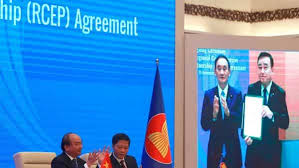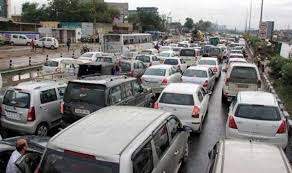
Fifteen countries on 15 November, 2020 have signed the Regional Comprehensive Economic Partnership (RCEP) trade deal, which includes 10 Southeast Asian economies along with China, Japan, South Korea, New Zealand and Australia.
Daily Current Affairs Quiz 2020
Key-Points
RCEP is the world’s largest trade pact in terms of GDP. First proposed in 2012, the deal was finally sealed at the end of a Southeast Asian summit as leaders push to get their pandemic-hit economies back on track.
The agreement to lower tariffs and open up the services trade within the bloc does not include the United States and is viewed as a Chinese-led alternative to a now-defunct Washington trade initiative.
India pulled out of the agreement last year over concerns about cheap Chinese goods entering the country and will be a notable absentee during Sunday’s virtual signing. It can join at a later date if it chooses.
Even without India, the deal covers 2.1 billion people, with RCEP’s members accounting for around 30 percent of global GDP.
Crucially, it should help shrink costs and make life easier for companies by letting them export products anywhere within the bloc without meeting separate requirements for each country.
The agreement touches on intellectual property, but environmental protections and labour rights are not part of the pact.
The deal is also seen as a way for China to draft the rules of trade in the region, after years of US retreat under President Donald Trump which have seen Washington pull out of a trade pact of its own, the Trans-Pacific Partnership (TPP).
Though US multinationals will be able to benefit from RCEP through subsidiaries within member countries, analysts said the deal may cause President-elect Joe Biden to rethink Washington’s engagement in the region.





